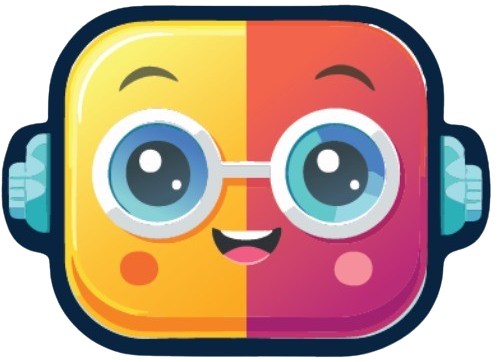You open your inbox and find a PDF titled “Q1 Compliance Review.” It’s 67 pages long, the formatting is messy, and the search bar barely helps. You need one answer. Just one. But getting to it? That means scrolling, skimming, and hoping the right section is labeled correctly.
Now imagine asking, “What were the flagged violations this quarter?” and instantly getting a response with references from the PDF itself—without opening it.
That’s the shift generative AI is making.
No more reading line-by-line or hoping a keyword search will save the day. AI can now read entire documents, break them into understandable parts, and return answers that make sense in context.
In this blog, we’ll unpack exactly how this works. From embeddings and vector databases to retrieval-augmented generation (RAG), we’ll walk through how AI turns passive PDFs into active knowledge—simplified for anyone with a technical background.
Enter generative AI. Not just chatbots, but AI systems that can read, chunk, understand, and summarize complex documents faster than any human could—then answer your follow-up questions with context.
This blog breaks down how AI turns static PDFs into active knowledge. We’ll keep it practical and engineering-friendly, explaining concepts like embeddings, vector search, and RAG with simple examples.
The Problem With Traditional Document Access
PDFs are designed for human reading, not machine querying. They’re often scanned, unstructured, and long. Searching them is keyword-based at best, and it fails when the answer doesn’t match your exact words.
Example:
Imagine you’re searching a 60-page compliance document for: “Can contractors access production servers?” A simple keyword search might not help if the document says, “Third-party access is restricted from environments with live data.”
You and I might connect the dots. A keyword search won’t.
Step 1: Parsing & Chunking
The PDF is first parsed using tools like PyMuPDF or PDFPlumber. Then, the content is split into semantically meaningful chunks—sections, paragraphs, or bullet points.
Technical Example:
Using PyMuPDF in Python:
import fitz # PyMuPDF
pdf = fitz.open(“sample.pdf”)
chunks = []
for page in pdf:
text = page.get_text()
chunks.extend(text.split(““)) # Split by paragraphs
Step 2: Embedding
Each chunk is turned into a vector—a numeric representation that captures its meaning. These vectors live in multi-dimensional space, so similar ideas are placed close together.
Analogy: Think of every paragraph becoming a GPS coordinate. AI can now “navigate” the document spatially.
Technical Example:
Using OpenAI embeddings:
from openai.embeddings_utils import get_embedding
embedding = get_embedding(“How to reset admin password”, engine=”text-embedding-ada-002″)
Step 3: Storing in a Vector Database
These embeddings are stored in a vector database like Pinecone, Weaviate, or FAISS. When a user asks a question, the AI converts that query into a vector and finds the chunks closest in meaning.
Technical Example:
Using Pinecone to store and query vectors:
import pinecone
pinecone.init(api_key=”YOUR_API_KEY”, environment=”us-west1-gcp”)
index = pinecone.Index(“pdf-index”)
index.upsert([(“chunk1”, embedding)])
result = index.query(embedding=query_embedding, top_k=3, include_metadata=True)
Step 4: Retrieval-Augmented Generation (RAG)
Once relevant chunks are retrieved, the LLM (e.g., GPT-4) uses them as context to generate an accurate, grounded response.
Technical Example:
Using LangChain’s RAG pipeline:
from langchain.chains import RetrievalQA
qa_chain = RetrievalQA.from_chain_type(llm=chat_model, retriever=vectorstore.as_retriever())
answer = qa_chain.run(“What are the steps to configure access controls?”)
Real-World Example
Use Case: A SaaS product manager wants to check if the old user manual explains how to enable 2FA for enterprise users.
Old Way:
- Manually browse the 80-page PDF
- Skim index, scan paragraphs
AI-Driven Way:
- Ask: “How can enterprise users enable two-factor authentication?”
- AI returns: “According to Section 6.3.2: Enterprise users can enable 2FA by navigating to Admin Settings → Security → Enable 2FA.”
The AI has essentially read the manual, indexed the logic, and retrieved your answer—with citation.
Why This Is Better Than Search
| Aspect | Keyword Search | AI-Powered Retrieval (RAG) |
| Matches synonyms | ❌ | ✅ |
| Understands context | ❌ | ✅ |
| Handles vague questions | ❌ | ✅ |
| Can summarize or rewrite | ❌ | ✅ |
| Responds with citations | ❌ | ✅ |
Tools Powering This Shift
- LangChain: Framework to chain PDF parsers + vector search + LLMs
- LlamaIndex: Simplified RAG stack for document Q&A
- ChatGPT w/ file upload: Basic, but effective for small documents
- Haystack by deepset: Enterprise-grade doc understanding stack
Limitations and What to Watch
- Garbage in, garbage out: Scanned PDFs with poor OCR reduce accuracy
- Cost and latency: Vector search + LLM inference isn’t free
- Context window limits: Only so much text can be included per response
Still, for compliance, customer support, sales enablement, and product documentation—this changes everything.
Final Thought
The next time someone emails you a 40-page spec, don’t skim.
Ask your AI to read it for you.
Generative AI doesn’t just retrieve information. It understands documents, remembers structure, and returns answers with clarity and speed.
From static PDFs to real-time insights—that’s not automation. That’s transformation.

